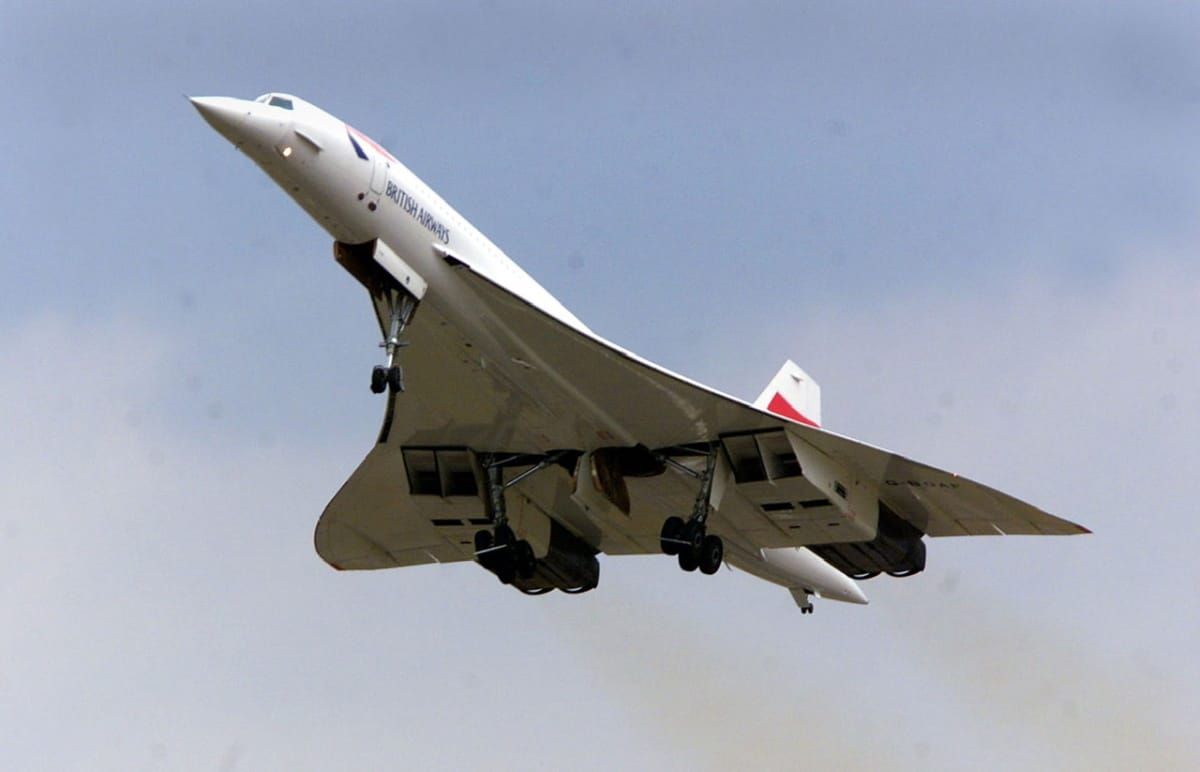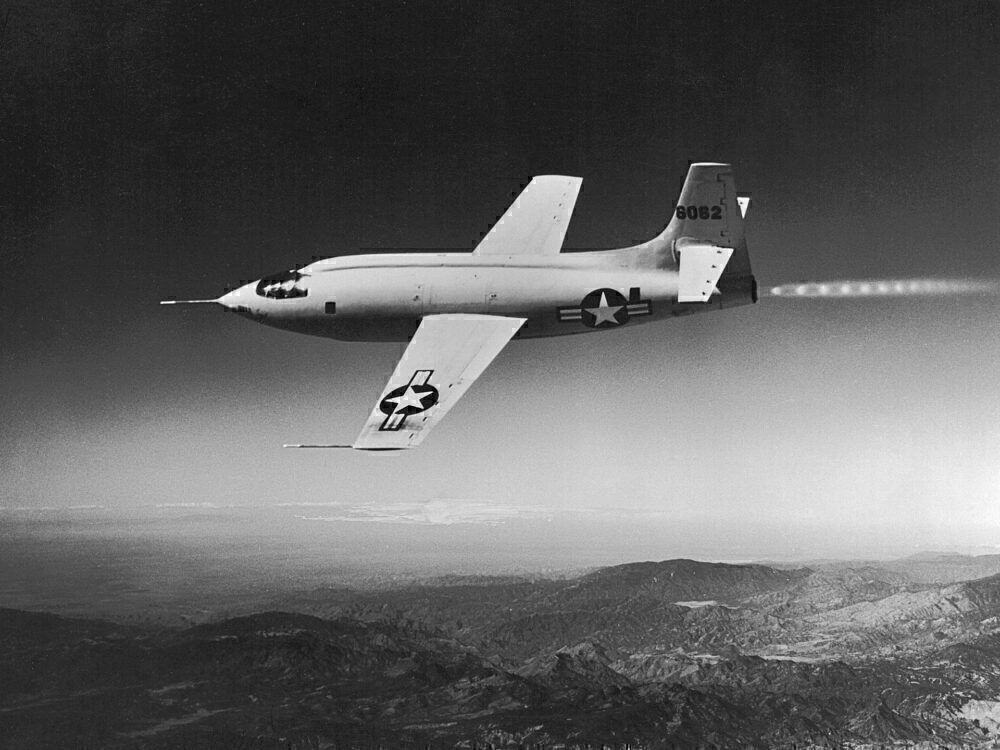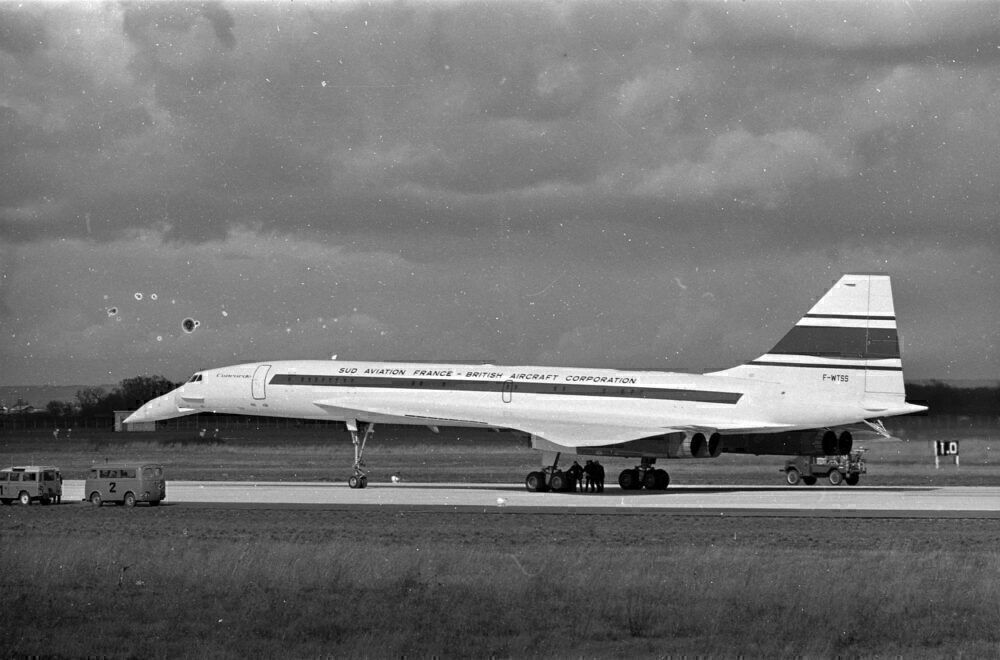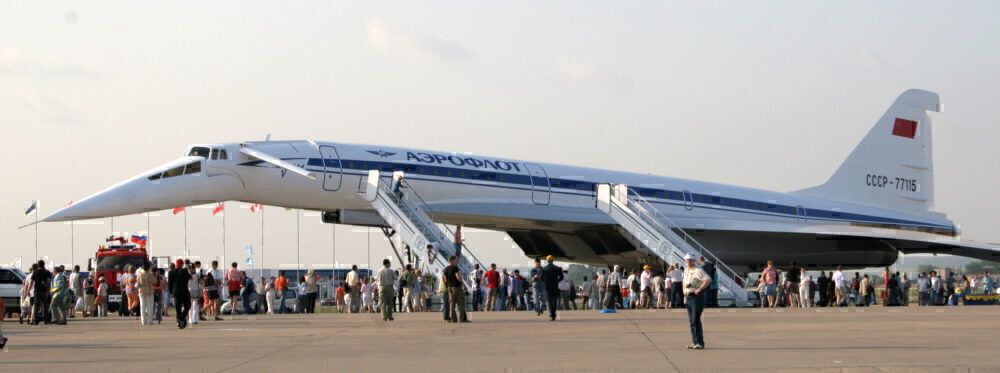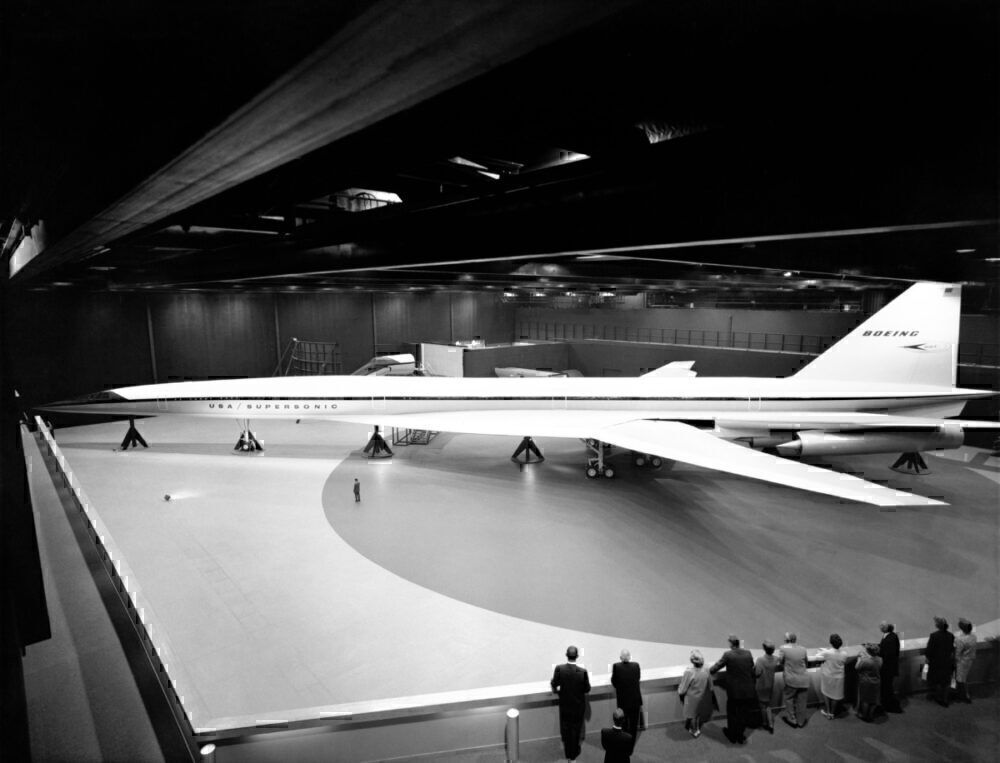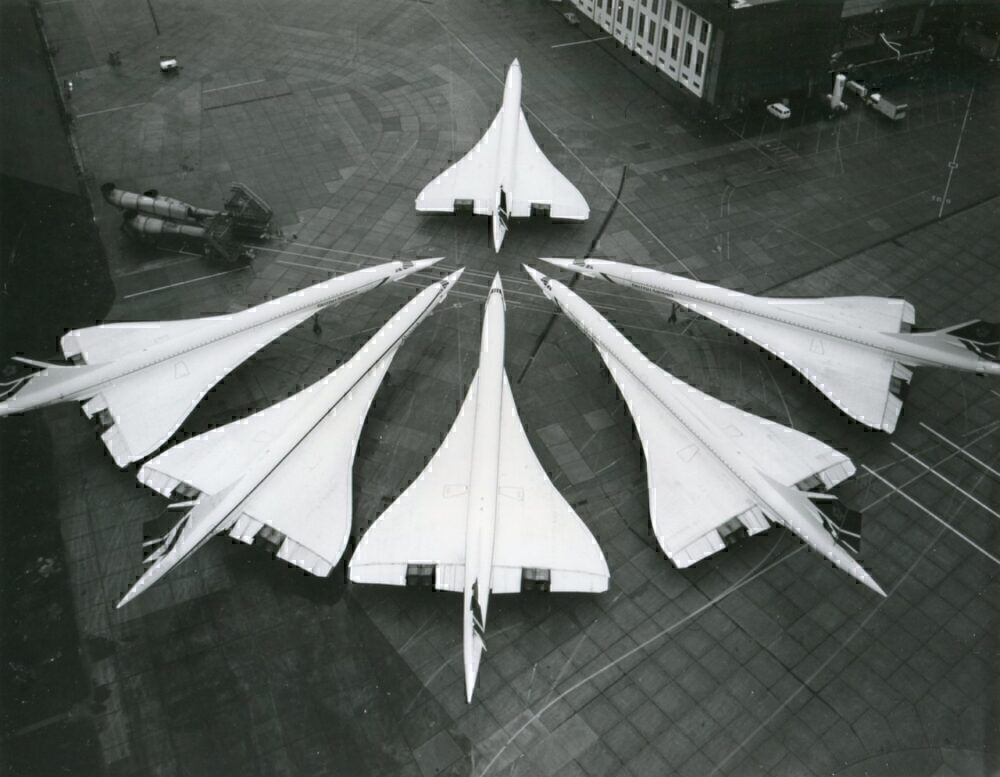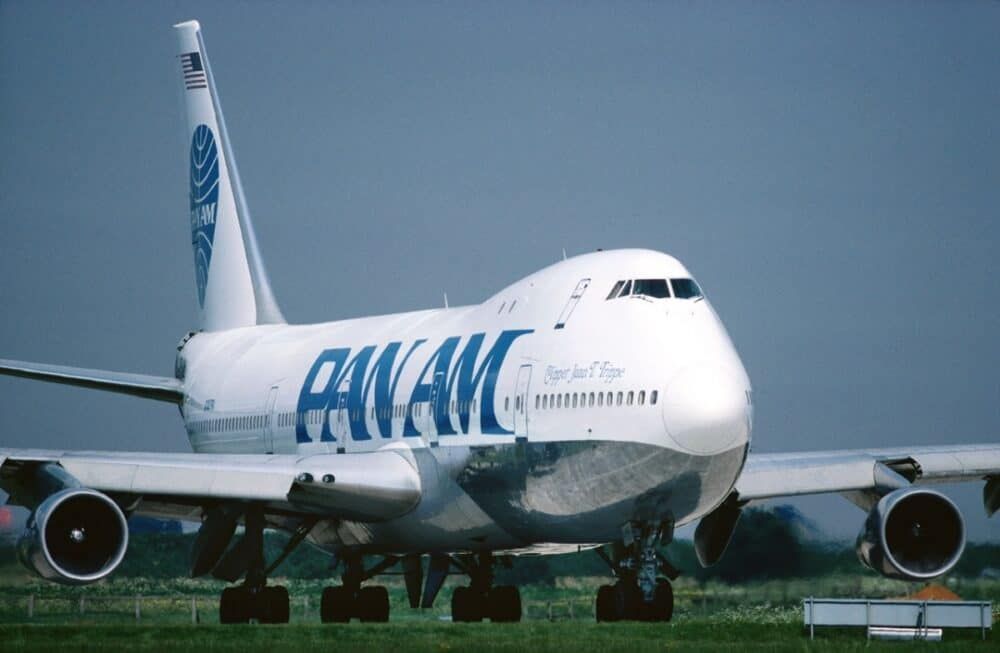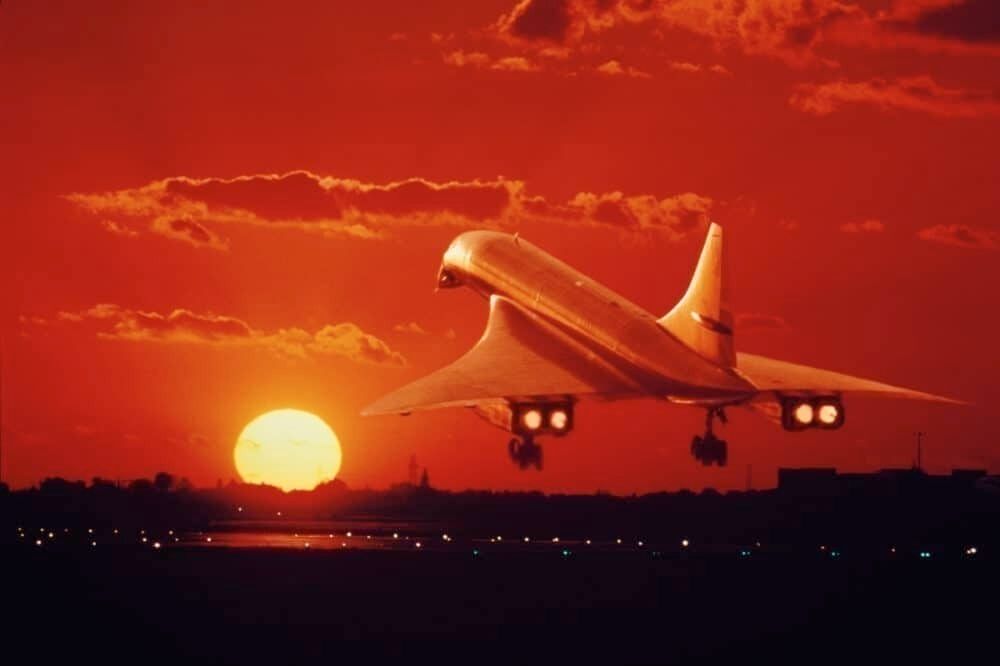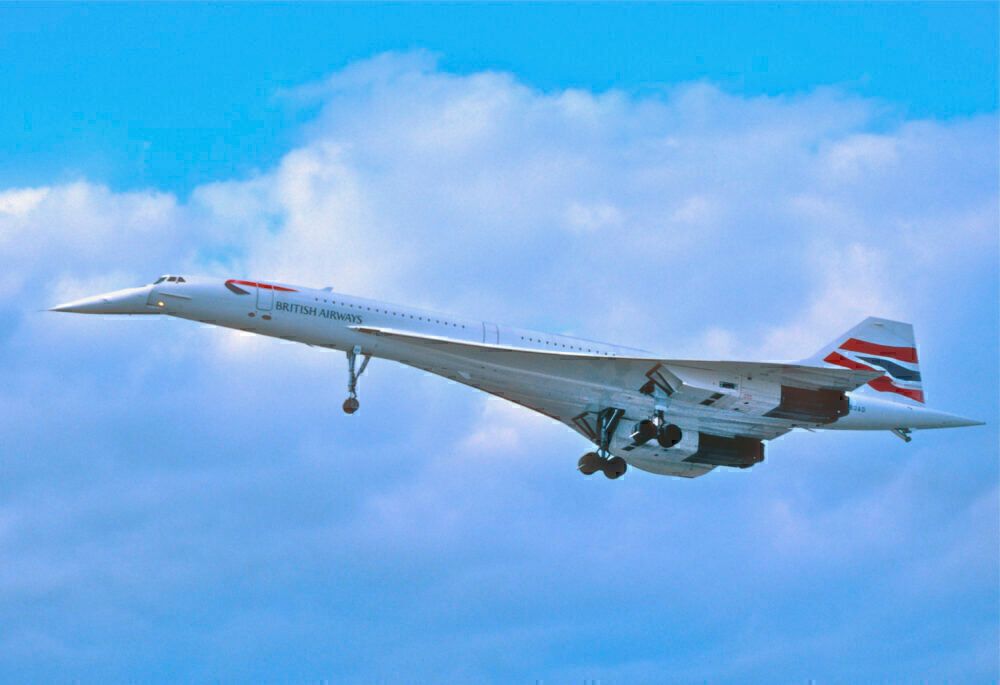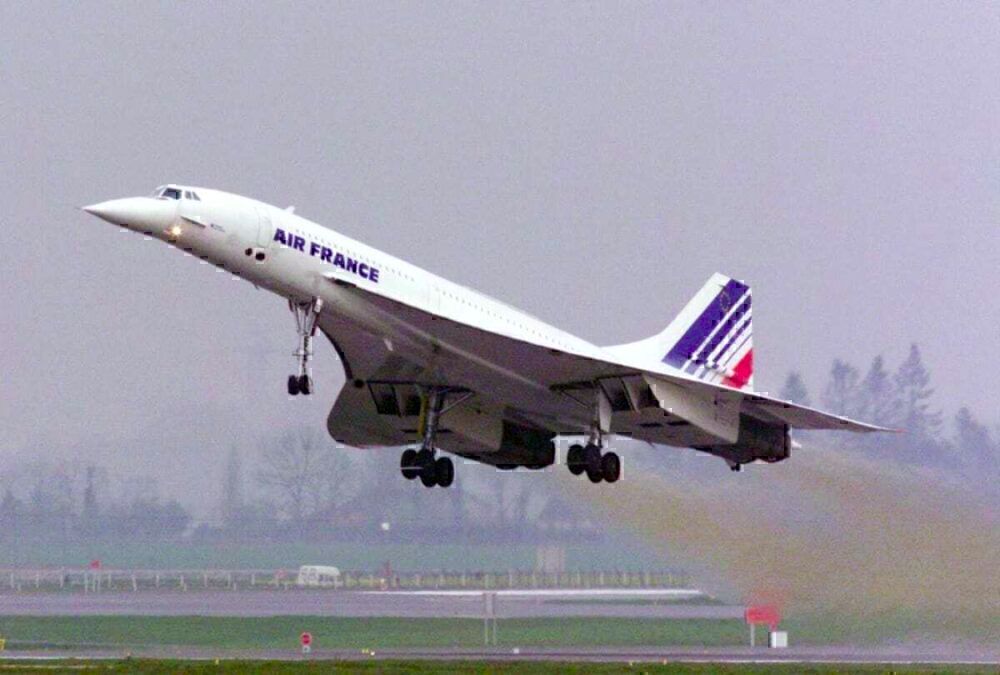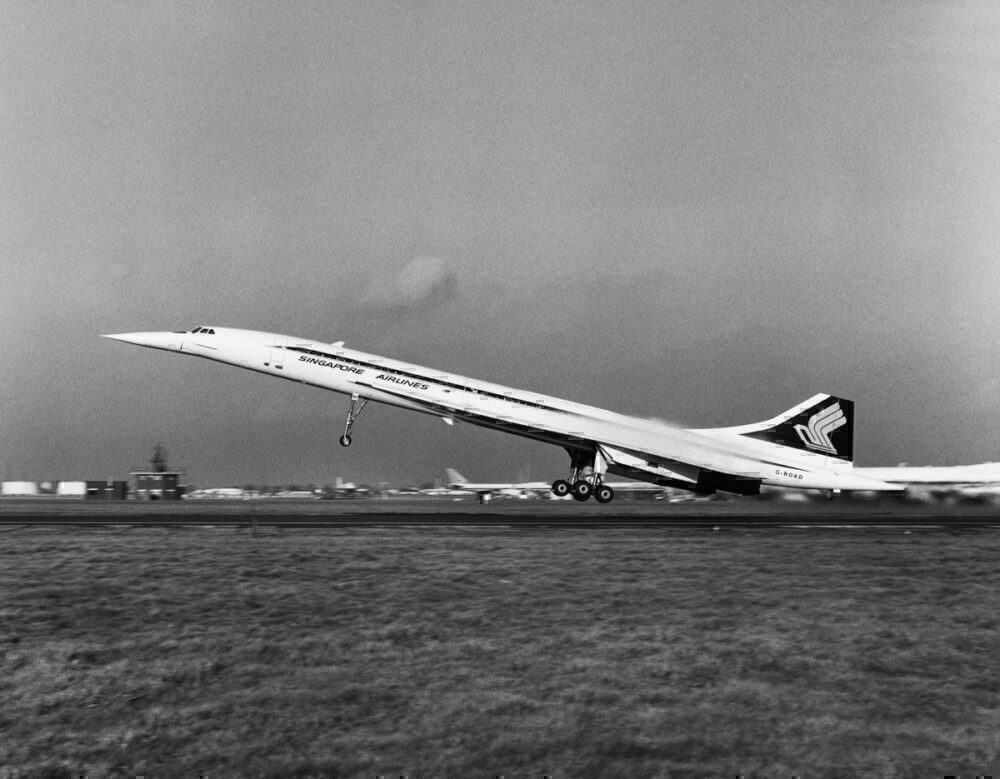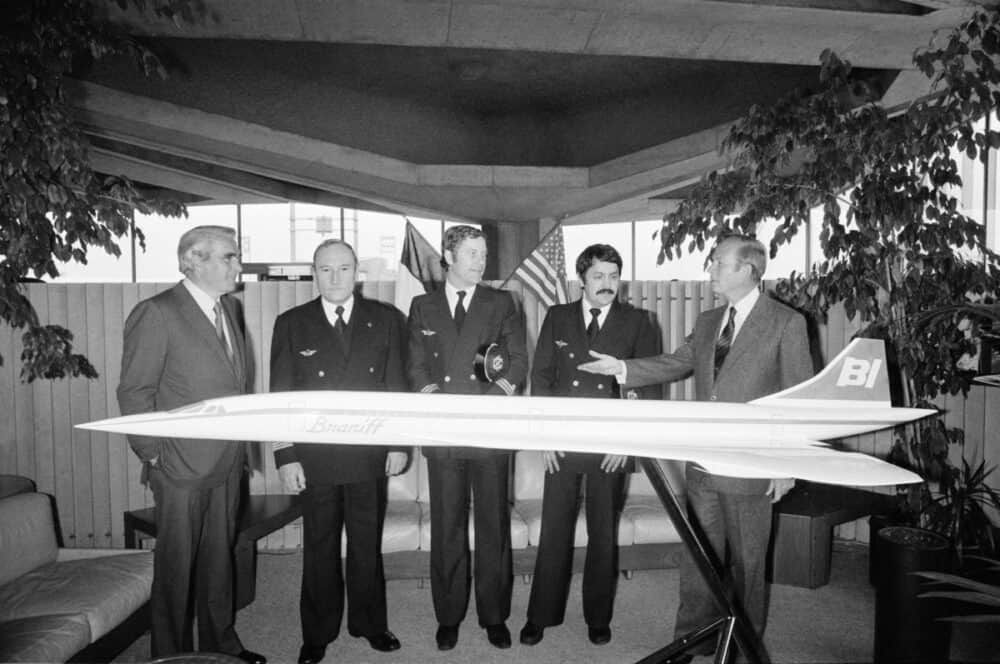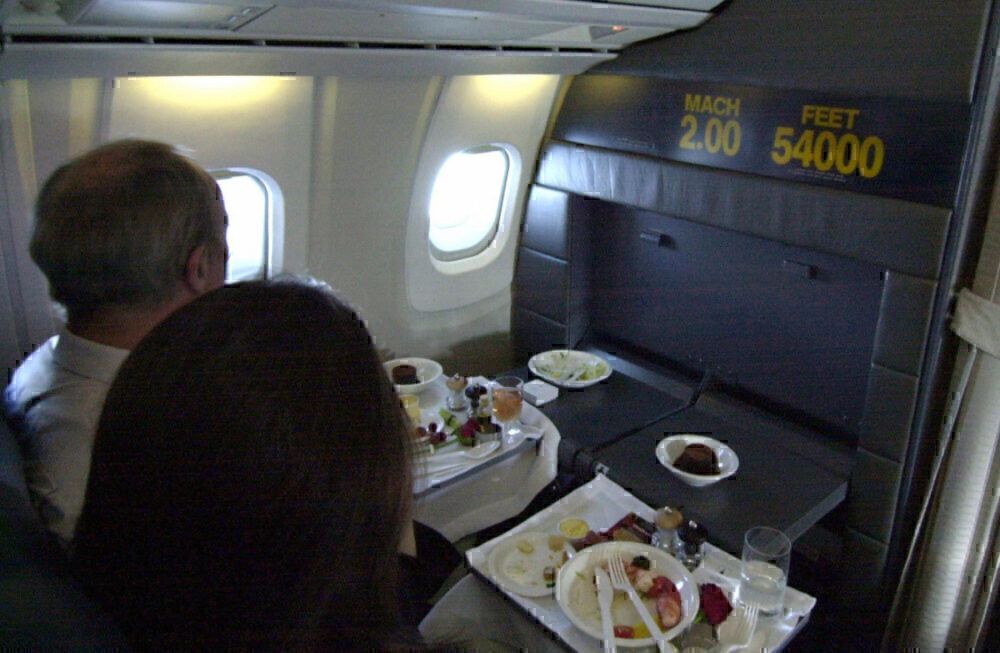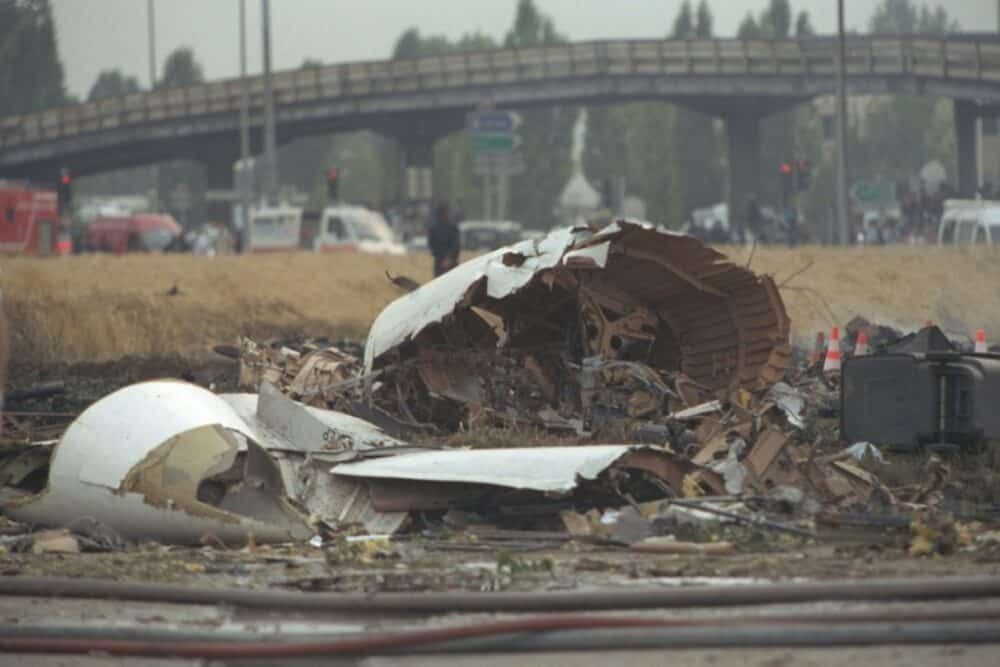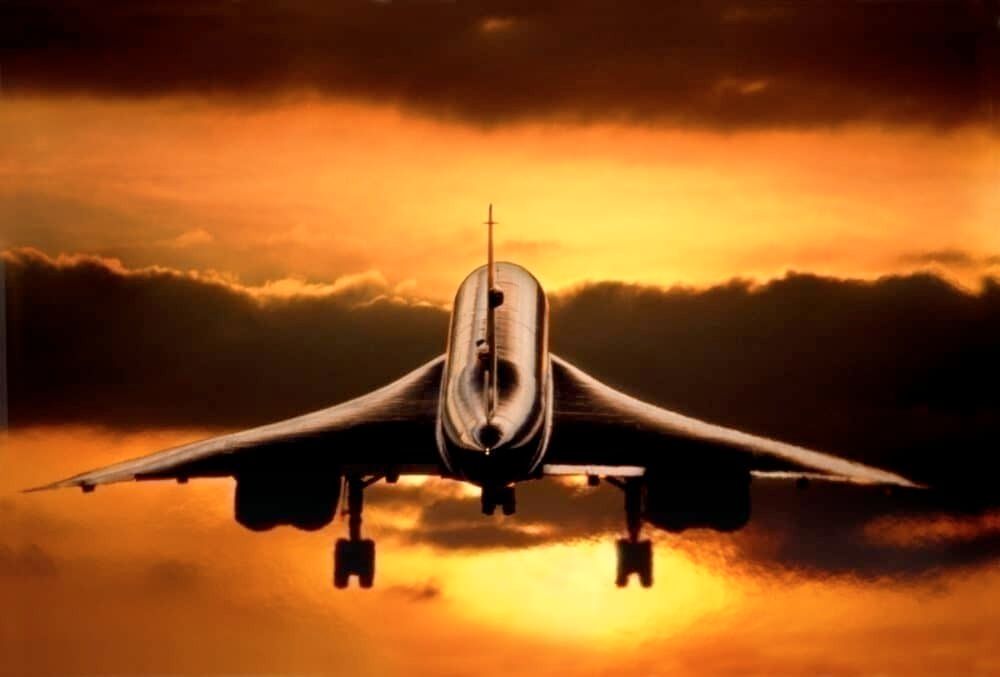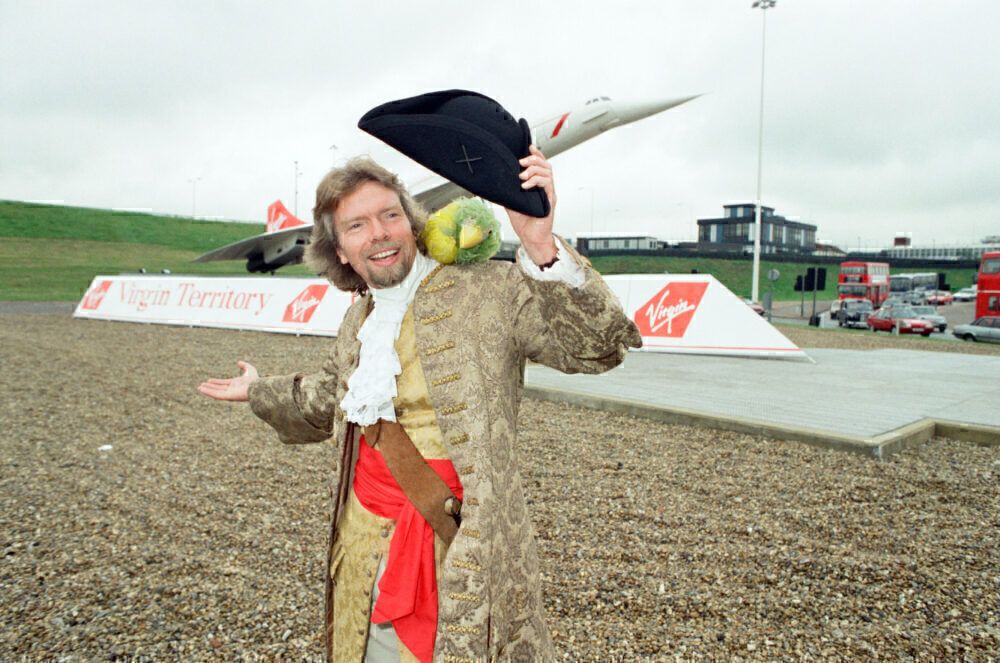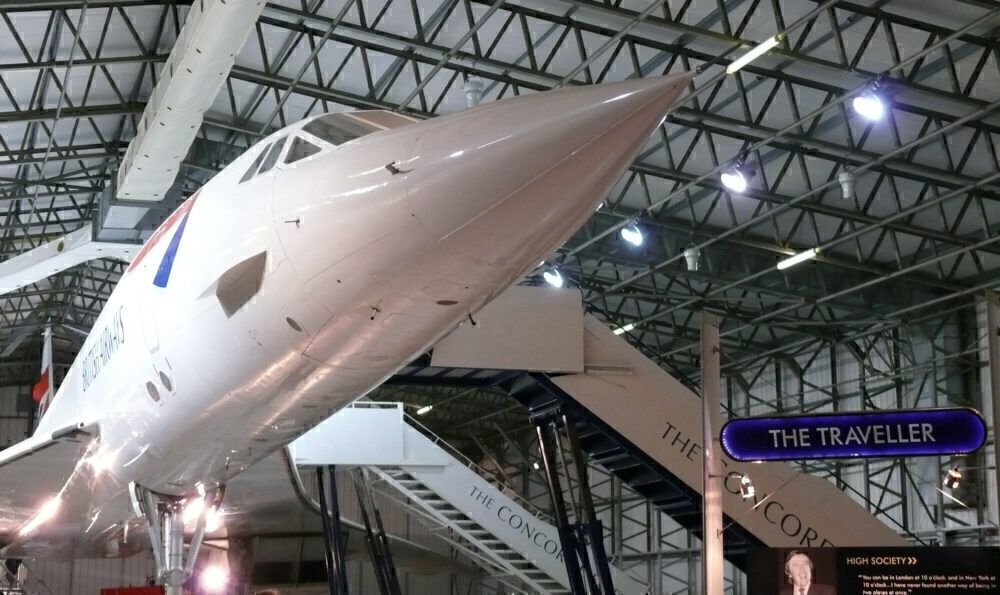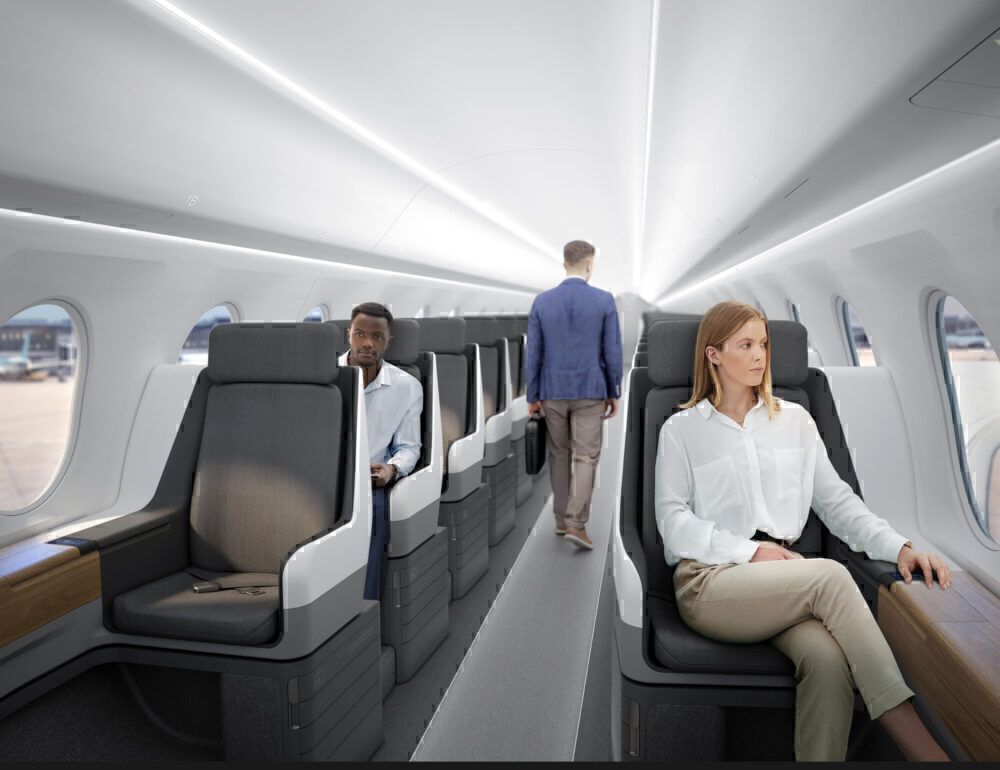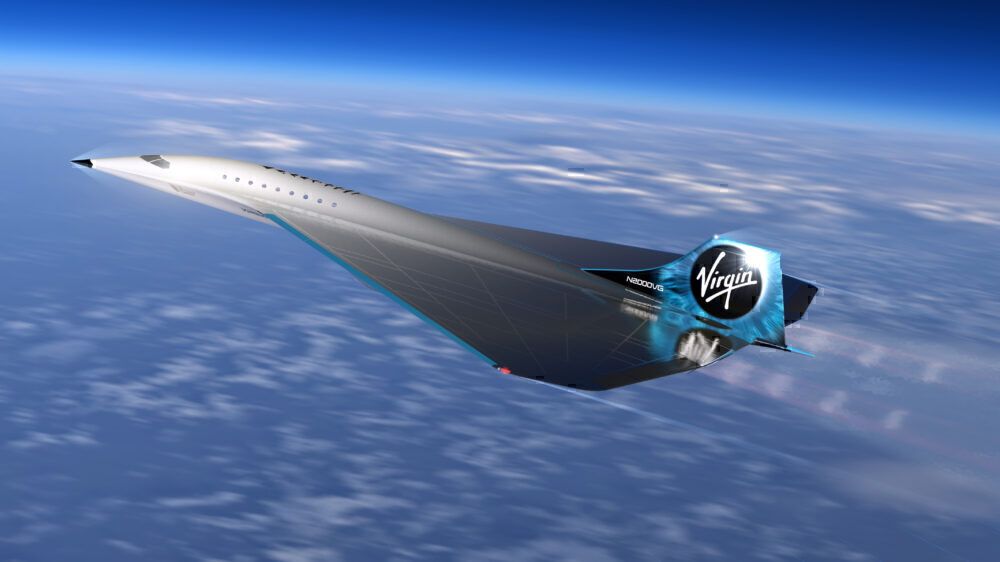Concorde has to be one of the top milestones to date in aviation. Designing and operating a commercial aircraft flying from Europe to New York in around three hours was an amazing achievement. Unfortunately, many airlines turned away from it even before its launch, and operating economics eventually sealed its fate. This guide looks back at the design, development, operations, and retirement of this iconic aircraft.
The development of Concorde
Concorde emerged out of the desire and efforts of several countries from the 1950s to launch a supersonic commercial aircraft. Supersonic travel first took place in October 1947, with Chuck Yeager flying the US Air Force Bell X-1 at Mach 1.06.
The dream of expanded this to commercial flight was born. The United States and Russia tried; only Russia succeeded. And European countries came together to develop with Concorde. It took its first flight in 1969 and entered service in 1976, jointly with British Airways and Air France.
A joint British-French undertaking
Concorde was developed as part of an international treaty between the British and French governments. The name ‘Concorde’ was chosen to represent this cooperation – with the English ‘concord’ and French ‘concorde’ meaning ‘agreement.’
It was built initially by British Aircraft Corporation (later to become BAE Systems) and French firm Sud Aviation (later Aerospatiale), jointly funded by the British and French government. The final cost of development was $1.44 billion for each of the two countries (massively more than the original estimates).
Although it only ever flew with British and French airlines, this was not the original intention. It was launched as a commercial project, with sales planned to several other airlines. As we will discuss, these were never to work out.
Russian competitor - The Tupolev Tu-144
Britain and France were not alone in developing supersonic transport, and they were not the first to succeed either. Russian manufacturer Tupolev launched the Tu-144 two months before Concorde, with an impressive specification. It had a higher speed (Mach 2.15 compared to 2.04), higher capacity (140 compared to 100), and a slightly longer range.
In reality, though, it was much less successful. It was very inefficient and costly to operate, requiring afterburners throughout flight (unlike Concorde, which only used them at certain points). It only ever operated with Russian airline Aeroflot, and only one route, Moscow to Almaty.
Still, it has an important place, as the only other supersonic commercial jet to ever fly. The Tu-144 retired from passenger service in 1978 after two fatal crashes. It remained in cargo use and then military service until 1999.
Other supersonic attempts from the US
Boeing 2707 / Super Sonic Transport (SST). This was the United States' proposed aircraft. It promised higher capacity (up to 292), speed, and range than Concorde and received 122 orders. But the project was canceled in 1971, as construction costs increased and attention shifted away from supersonic travel towards projects like the Boeing 747.
Lockheed also proposed a supersonic jet for the US project, the L-2000. This lost out, though, to the Boeing 2707. It would have used a Delta wing design (rather than the ‘swing-wing’ design from Boeing) and perhaps been more practical to construct as it was lower capacity.
Orders and sales - the start of its downfall?
Concorde entered service in January 1976 with British Airways and Air France. A simultaneous takeoff for the first commercial flights was arranged, with British Airways flying from London Heathrow to Bahrain and Air France to Rio de Janerio (via Senegal).
Each of the two airlines went on to take delivery of seven aircraft, with six more built as prototypes and test aircraft. There had been plenty more interest, though. In total, around 100 options were placed for purchases by 18 airlines.
There were originally two versions of Concorde planned: a long-range and a short-range version. However, there was little interest in the short-range aircraft, which was ultimately dropped due to lack of orders.
Orders from 18 airlines
The 1960s excitement and potential of supersonic transport is perhaps best shown by the orders received. Concorde had around 100 options from 18 airlines, and the competing Boeing 2707 had 122 options from 26 airlines.
Concorde had the following options placed (data is sourced from website Heritage Concorde):
| Options | Date Placed | Date Cancelled | |
| BOAC (then British Airways) | 6 (plus 1 more in 1984) | June 3rd, 1963 | |
| Air France | 6 (plus 1 more in 1980) | June 3rd, 1963 | |
| Pan American World Airways | 8 | 6 options June 3rd, 1963, plus 2 more July 24th, 1966 | January 31st 1973 |
| Continental | 3 | July 24th, 1963 | March 1973 |
| Trans World Airlines (TWA) | 6 | 4 options on October 16th, 1963, 2 more on March 30th, 1964 | February 1973 |
| American Airlines | 6 | 4 options on October 7th, 1963, 2 more on January 16th, 1964 | February 1973 |
| Middle East Airlines (MEA) | 4 | 2 on December 4th, 1963, 2 more on January 16th, 1964 | February / June 1973 |
| Qantas | 4 | March 19th, 1964 | 2 options canceled in 1966, others in 1973 |
| Air India | 2 | July 15th, 1964 | February 1975 |
| Japan Airlines | 3 | September 30th, 1965 | 1973 |
| Sabena | 2 | December 1st, 1965 | February 1973 |
| Eastern Airlines | 6 | 2 on June 28th, 1966, August 15th, 1966, and April 28th, 1967 | February 1973 |
| United Airlines | 6 | June 29th, 1966 | November 1972 |
| Braniff | 3 | September 1st, 1966 | February 1973 |
| Lufthansa | 3 | February 16th, 1967 | April 1973 |
| Air Canada | 4 | March 1st, 1967 | June 1972 |
| CAAC | 3 | 2 on July 24th, 1972, 1 more on August 28th | December 1979 / February 1980 |
| Iran Air | 3 (2 orders, 1 option) | October 8th, 1972 | February 1980 |
Canceling the options
Only British Airways and Air France, however, went on to confirm orders and take delivery. In perhaps the first sign of its problems and eventual demise, all other airlines canceled options, mostly by 1975 (although a few hung on until 1979/1980).
Simple Flying took a more detailed look at the reasons for this, but in summary, the following factors all contributed:
The increasing cost of the project. There were many unknowns with supersonic aircraft. Airlines were unsure of the operating costs and returns, and this fear increased when estimated aircraft costs continued to rise. The New York Times explained this well in reporting at the time, highlighting that by 1973, the estimated cost per aircraft had risen from under $20 million to $46 million, and many expected it to increase to $60 million.
Crash of the Tu-144. The aircraft crashed in 1973 whilst demonstrating at the Paris Air Show, harming confidence in supersonic possibilities.
Cancellation of the Boeing 2707. This competing project was canceled in 1971. It had more orders, and this raised more concerns over Concorde's viability.
A shift in preference to high-capacity aircraft. Airlines began to look at larger aircraft (such as the Boeing 747), and the focus switched to the potential higher capacity and lower ticket prices.
Noise impact. This was always known to be a problem with supersonic aircraft, but concerns grew as the project progressed. A potential limitation to only operate over water was too much of a restriction for some airlines.
Building Concorde - An engineering marvel
Concorde stands out for many as one of the top engineering successes of modern times. Of course, it had its flaws but nevertheless was a great achievement. In many ways, it's a part of aviation technology that has been frozen since the 1960s, with no further interest (until recently) in developing it further.
We take a quick look at some of Concorde's standout features, which together gave it the performance and aerodynamic ability to reach Mach 2.
Newly designed engines
The first key to exceeding the speed of sound was powerful engines. Concorde used four Rolls-Royce/Snecma Olympus 593 turbojet engines. These were developed initially by British manufacturer Bristol Siddeley Engines (acquired by Rolls-Royce during development) and French manufacturer Snecma. Initial designs looked at turbofan engines, but these were rejected as the larger size caused too much drag (the Tu-144 initially used turbofan engine).
Reheat (afterburner) technology was added. This was critical to reaching high speeds and was used by Concorde on take-off and between Mach 0.95 and Mach 1.7. Not requiring this at other times was crucial in improving efficiency and fuel burn.
Special consideration was also needed for engine failure. Simulations predicted that a double engine failure at supersonic speeds would be catastrophic. Automation was required to apply the correct rudder (FlightGlobal has an interesting discussion of this and whether it was really necessary). There were also many modifications made to engine air intakes.
Delta wings
One of the challenges of supersonic flight is the drag created at such high speeds. This is related to the span of the wing, so reducing the wingspan was an essential step. Such a 'trapezoid' shape had been used on early military jets and missile flight systems. The smaller wing, though, would produce much less lift, a problem for larger commercial aircraft.
The solution was the delta wing that was an instantly recognizable feature of Concorde. This used a small span, swept-back, and thin design to increase lift at high angles of attack.
Dropping nose
Many remember Concorde's moveable nose as one of its most distinguishing features. Its long, pointed nose helped reduce drag and improve aerodynamic efficiency, but this posed a problem during take-off and landing. The steep angle of attack required by Concorde would leave pilots with significantly restricted forward vision.
A hinged nose that could be dropped for take-off and landing was the solution. This actually had two lowered positions of five degrees for take-off and climb and initial approach and 12.5 degrees for final approach and landing.
High altitude operation
Another unusual ability of Concorde was to operate at a much higher altitude. Most commercial jets cruise at a maximum altitude of around 42,000 feet. Concorde increased this to 60,000 feet due to the increased lift generated when flying at much higher speeds. At low altitudes, drag would prevent it from reaching its high speeds.
One reason why other aircraft cruise lower is for passenger safety. At higher altitudes, passengers have less time to reach in the event of cabin depressurization and aircraft are therefore limited by regulations. Concorde mitigated these risks in several ways:
- Its delta wing enabled a much faster emergency descent.
- It had an automatic system to assist with rapid emergency descent.
- Cabin windows were smaller than other aircraft to slow a decompression if a window failed.
For passengers, this also brought an increased chance to see the curvature of the earth, certainly a bonus!
Operators and routes
Concorde routes with British Airways and Air France
New York is the most remembered Concorde destination and for good reason. Both British Airways (BA) and Air France operated regular New York services. This has always been a key transatlantic route and a profitable one. Concorde was also unable to fly supersonic further overland, and this resistance to noise pollution heavily restricted its routes.
Other important BA routes included:
- London to Bahrain. This was BA's first Concorde destination in 1976. The route carried on until 1980, with an extension to Singapore.
- Flight to Washington Dulles International. This was the first US airport served until New York lifted noise restrictions in 1977. It remained a destination until 1994. Miami was also added between 1984 and 1991.
- Barbados was a seasonal service from 1987 until retirement in 2003.
And Air France also operated:
- Rio de Janeiro (via Dakar) was Air France's first service in 1976.
- Various South American destinations, usually coinciding with boom periods in the 1970s and 1980s including Caracas, Venezuela, and Mexico City.
- Like British Airways, it also served Washington Dulles but stopped this in 1982.
A few other operators
Concorde was also flown in collaboration with a few other airlines. There were also plenty of charters that took Concorde to many locations. According to Concorde enthusiasts, British Airways operated around 300 charters each year.
Two main airline operations included:
- A joint service with Singapore Airlines and British Airways to Singapore via Bahrain. This operated on and off between 1977 and 1980 and featured a dual livery painted Concorde (G-BOAD). It suffered various routing issues (including noise complaints in Malaysia and lack of permission to fly supersonic in Indian airspace) that led to its cancellation.
- Braniff International Airways operated Concorde services, flying subsonic, between Dallas and Washington Dulles. This ran with both BA and Air France aircraft from 1978 to 1980 but ultimately was not profitable.
The costs of flying Concorde
It certainly wasn't cheap, and this played a part in its downfall. Simple Flying looked in more detail at the costs in a recent article. In 1977, the one-way fare from London to Washington was £431. Adjusted for inflation, that’s about $3,400 today.
Fares increased as time went on. By the late 1990s, the one-way transatlantic fare was around $6,000. And with significant improvements in business and first class products around the same time, it became harder to sell. Of course, there was always the 'brand' impact and the use of Concorde as a promotion for the airlines, but ultimately it struggled with these high costs.
Concorde's demise and retirement
As we have discussed, Concorde's problems began before it even flew. Options for it were canceled as the cost and economics were looking bad, and attention moved away from supersonic to higher capacity and lower fares.
These factors likewise became problems for British Airways and Air France when operating it. When Concorde was designed, oil (and fuel) prices were low. However, the oil crisis of 1973 to 1974 sent prices up, hurting the economics of operating it.
The sonic boom issues continued as well. Overland operations remained restricted due to the notice, and as such, it was essentially restricted to transatlantic routes (it did have the range to be considered for transpacific ones). Expansion beyond its few flagship services, therefore, never happened.
And we can't discuss its demise without looking at its safety record. The crash of Air France Flight 4590 in July 2000 killed all 109 passengers and crew onboard. There may have been just one crash in its history, but it shook confidence in it and sent its safety record (measured as hull losses per million flights) plummeting.
Final retirement in 2003
In the end, Concorde was retired in 2003. British Airways and Air France jointly announced this in April. Air France flew its last commercial flight in June, with British Airways operating it until October.
The Air France crash, of course, contributed to its retirement then. But in reality, its fate was sealed economically long before that. The high cost of operation (and hence tickets) had been a problem for a long time, and the slowdown seen after the New York terrorist attacks in 2001 made this worse.
But don't forget as well that the fleet was by that point aging. Concorde had been in service for 27 years, a good age for an aircraft, and to keep it operating would be increasingly expensive.
Did Concorde ever make a profit?
Although the UK and French governments did not recover their huge investment cost in Concorde, it did make a profit for the operating airlines. In a good year, British Airways made £30-50m ($37-61m) profit from Concorde; Air France slightly less.
Of course, revenue was dependant on up to 100 passengers per flight paying a high price for a much shorter flight. Both Air France and British Airways had customers for this (and the earlier desire of many other airlines to introduce Concorde or the Boeing SST shows they likely did as well). Airline economics is complicated, though. Whilst they were making a profit from these premium passengers, how much (if any) would they lose by transferring business to other, more efficient aircraft.
Where are the aircraft now?
After retirement, most aircraft headed to storage and display. There was an attempt from Virgin Atlantic's Richard Branson to buy them (initially for just the £1 that British Airways had paid, but later increased to an offer of £5 million). Unfortunately, this never proceeded, despite an appeal to the UK government to step in.
Simple Flying looked in detail in late 2020 at where all the aircraft have ended up. Only one has been scrapped, and others are displayed or stored.
- In the UK, these are on display at the Fleet Air Arm Museum in Yeovilton, Imperial War Museum in Duxford, Weybridge’s Brooklands Museum, and the Museum of Flight in Scotland. Others are stored at Heathrow and Manchester airports, and one at Aerospace Bristol.
- In France, they can be seen at the Museum of Air and Space in Le Bourget and Musée Delta in Orly Airport. Airbus houses one at Toulouse and one is at Paris Charles de Gaulle airport.
- Overseas, there are aircraft on display at the Smithsonian National Air and Space Museum in Virginia, Intrepid Sea-Air-Space Museum in New York, the Museum of Flight in Seattle, Sinsheim Auto & Technik Museum in Germany, and at Grantley Adams International Airport in Barbados.
Will supersonic return again?
Almost twenty years after Concorde's last flight, the situation is once again looking promising for supersonic flights. Several companies are currently working on plans for passenger jets that could be in the air before 2030.
Boom Supersonic is the furthest ahead of these. It plans a 55 seat premium aircraft, capable of reaching Mach 2.2 and with a range of up to 8,334 kilometers. It has already released a prototype, and test flights are due to start in 2021.
Other developments include the smaller AS2 from Aerion Supersonic and S-512 from Spike Aerospace, but these are in earlier stages. Virgin Galatic has also released plans for its Virgin Galactic Mach 3, being developed together with Rolls-Royce. As its name suggests, it aims for a top speed of Mach 3, well ahead of the competition.
Today's manufacturers have addressed the problems with Concorde's high operating costs and lack of efficiency. Boom's Overture will reach Mach 2.2 without the use of afterburners and will be compatible with sustainable aviation fuels. The AS2 aims for carbon-neutral operation and 100% use of sustainable fuels.
Concorde and supersonic flights are fascinating topics. Feel free to share your memories or thoughts of Concorde, or comments about the hopefully future return of supersonic travel.

